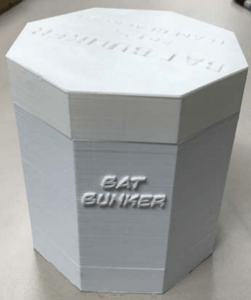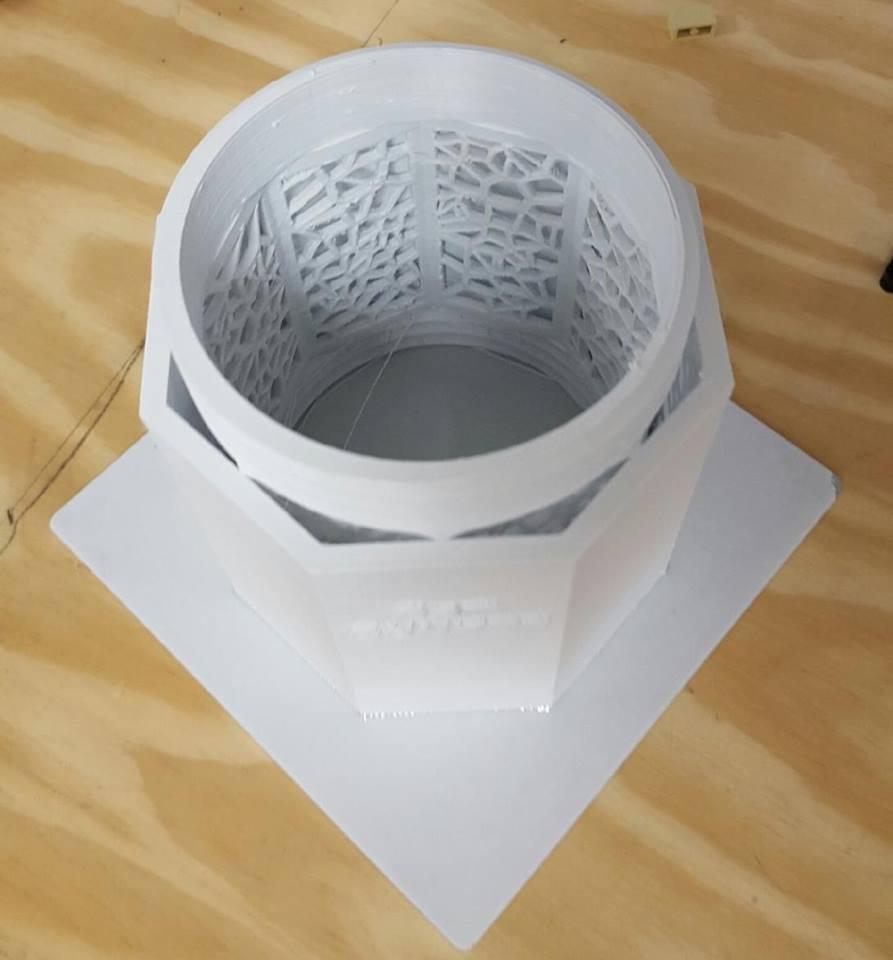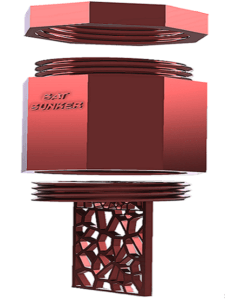 Have you ever found an animal utterly fascinating, while also being slightly creeped out by it? I feel this way about snakes – I think they are really interesting animals, and I’ve handled them before, but I also wouldn’t want to just happen upon one when I wasn’t expecting it. The same goes for bats; seriously, how cool is echolocation and that business where they sleep upside down? But I also remember seeing them flying around in my neighborhood growing up and being freaked out that they would dive bomb me (this obviously never happened).
Have you ever found an animal utterly fascinating, while also being slightly creeped out by it? I feel this way about snakes – I think they are really interesting animals, and I’ve handled them before, but I also wouldn’t want to just happen upon one when I wasn’t expecting it. The same goes for bats; seriously, how cool is echolocation and that business where they sleep upside down? But I also remember seeing them flying around in my neighborhood growing up and being freaked out that they would dive bomb me (this obviously never happened).
The bat population in Kentucky has declined over 83% since 2013, due to habitat destruction and an epidemic of the deadly bat disease white-nose syndrome. Regardless of how you feel about bats, if you hate them or want to learn more about them, a decline this severe could cost the state’s agricultural industry up to a billion dollars, because bats are incredibly important for both pollination and pest-control: since they eat mosquitoes and other nocturnal insects, they help quell the spreading of diseases these bugs carry. Also, bats usually only give birth to one pup a year, so the population isn’t bouncing back quickly. But a team of creative middle school robotics students in Louisville is using 3D printing to help restore the state’s bat population!

Team Blackout Members (L-R): Ryan Thomasson, Caleb Wright, Olivia Janssen, Quinlan Toole, Aidan Pomles
Team Blackout, comprised of five Whitefield Academy Robotics students, is working to address this issue for the school year’s FIRST LEGO League (FLL) robotics competitions, which we’ve written about before. Student teams, ages 9 to 14, must examine real-world scientific problems, and come up with a solution. This year’s competition theme is Animal Allies, and FLL teams were challenged to design their own innovative solutions for problems that come up when humans interact with animals. Robert Toole, IGear Online, is Team Blackout’s robotics coordinator, and one of the team’s coaches. He explained that two of the team members came up with the idea to help the state’s bat population during a Boy Scout backpacking trip in Red River Gorge.
“While stopping at the Gadie Center to get water they noticed a bat presentation conducted by Kentucky’s US Fish and Wildlife,” Toole told 3DPrint.com. “It was there they learned about the declining bat population worldwide and how bats are very beneficial for the environment and humans. During the presentation they also built a wooden bat house from wood, caulk, screws, and screen material. On our way back to the trail they both mentioned they should focus on bats for their project. They discussed different options and Aidan mentioned ‘…I have a 3D printer at home, why don’t we design a bat house that can be printed on a 3D printer?…’ And that’s how it got started.”
 Bat houses are, typically, handmade wooden structures that can give displaced bats a safe place to roost and raise their babies. Large bat houses can give hundreds of bats shelter, and many people are starting to install these structures on their own properties to help in the conservation efforts. To make a bat house, you normally need access to power tools, and at least a moderate amount of carpentry skills. But Team Blackout decided they would harness the growing power and availability of 3D printing, and instead design a bat house that anyone with access to a 3D printer could download and print at home.
Bat houses are, typically, handmade wooden structures that can give displaced bats a safe place to roost and raise their babies. Large bat houses can give hundreds of bats shelter, and many people are starting to install these structures on their own properties to help in the conservation efforts. To make a bat house, you normally need access to power tools, and at least a moderate amount of carpentry skills. But Team Blackout decided they would harness the growing power and availability of 3D printing, and instead design a bat house that anyone with access to a 3D printer could download and print at home.
The team spent some time researching bat house designs from the Bat Conservation International Group, but eventually decided to seek out professional assistance from Louisville-based engineering and 3D printing company 3 Space.
Toole told 3DPrint.com, “They suggested that we use Autodesk Fusion 360 and that we should investigate using a Voronoi pattern as the cling wall. The team took this information and in a few weeks the octagon shape with Voronoi cling-wall was born. They knew they wanted something that could be printed on most 3D printers available to middle school kids so they kept their design small but modular. The final design allows for multiple middle sections to be combined to create a taller bat house to hold more bats.”
 The modular bat house Team Blackout designed is printed in three sections, and can also be expanded. The popular voronoi pattern is on the inside walls and bottom plate of the house, so the bats have a textured surface to climb on and roost from. You can download their design for free on Thingiverse and GrabCad.
The modular bat house Team Blackout designed is printed in three sections, and can also be expanded. The popular voronoi pattern is on the inside walls and bottom plate of the house, so the bats have a textured surface to climb on and roost from. You can download their design for free on Thingiverse and GrabCad.
Team Blackout competed against 48 other teams at the Louisville FLL Engineers of Tomorrow Regional Tournament and won the Overall Champions Award. They will now be moving on to the Kentucky State FLL tournament on Saturday, February 4th; the competition will be held at Northern Kentucky University. The team is also coached by Brad Janseen, HPE Hewlett Packard Enterprise; Allen Thomasson, Thermal Equipment; and Charles Pomles, Premiere Packaging. Good luck to Team Blackout! Discuss in the Bat House forum at 3DPB.com.
Subscribe to Our Email Newsletter
Stay up-to-date on all the latest news from the 3D printing industry and receive information and offers from third party vendors.
You May Also Like
Profiling a Construction 3D Printing Pioneer: US Army Corps of Engineers’ Megan Kreiger
The world of construction 3D printing is still so new that the true experts can probably be counted on two hands. Among them is Megan Kreiger, Portfolio Manager of Additive...
US Army Corps of Engineers Taps Lincoln Electric & Eaton for Largest 3D Printed US Civil Works Part
The Soo Locks sit on the US-Canadian border, enabling maritime travel between Lake Superior and Lake Huron, from which ships can reach the rest of the Great Lakes. Crafts carrying...
Construction 3D Printing CEO Reflects on Being Female in Construction
Natalie Wadley, CEO of ChangeMaker3D, could hear the words of her daughter sitting next to her resounding in her head. “Mum, MUM, you’ve won!” Wadley had just won the prestigious...
1Print to Commercialize 3D Printed Coastal Resilience Solutions
1Print, a company that specializes in deploying additive construction (AC) for infrastructure projects, has entered an agreement with the University of Miami (UM) to accelerate commercialization of the SEAHIVE shoreline...





























